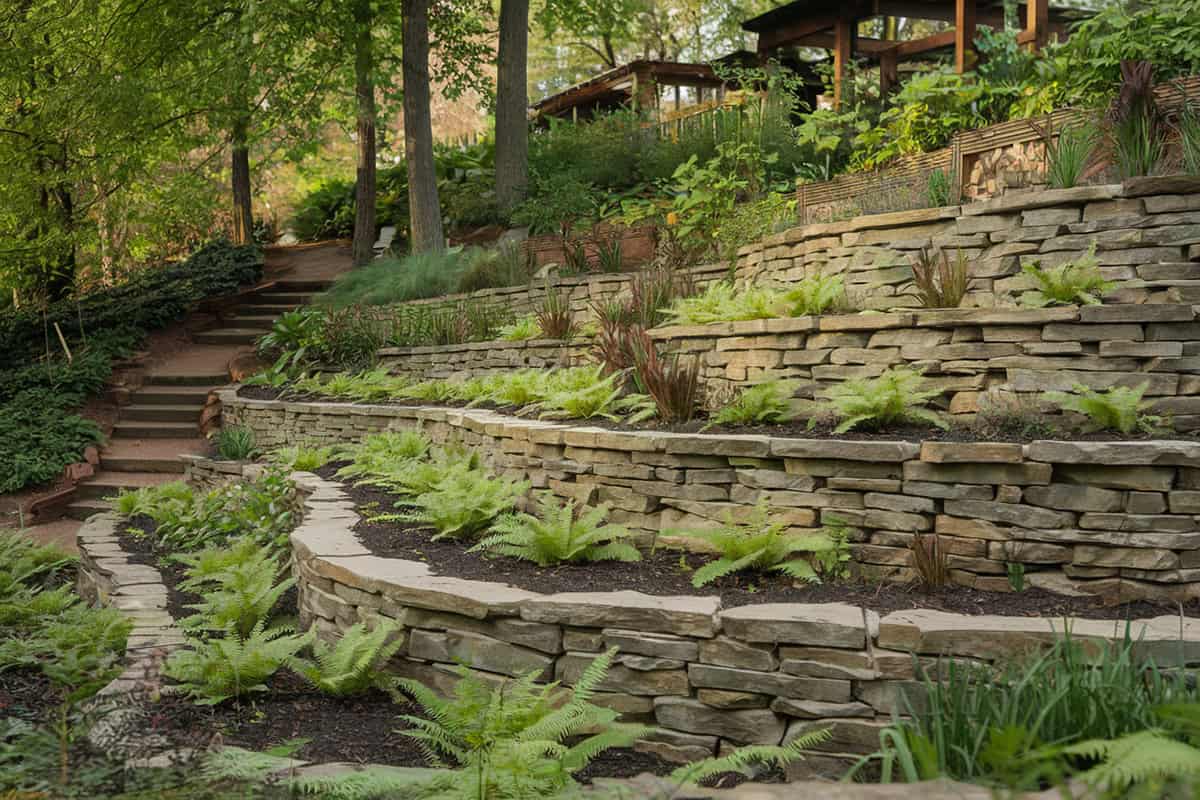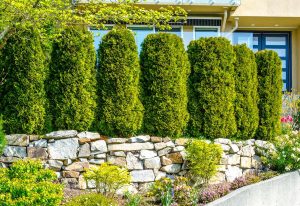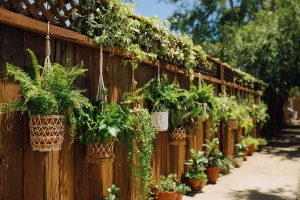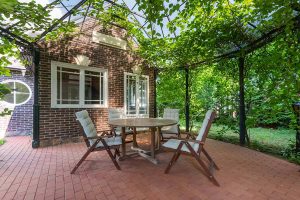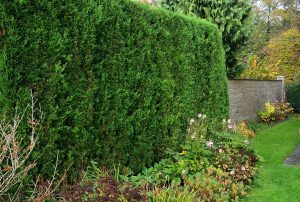A sloped woodland garden is a unique opportunity to create a layered, natural landscape that feels like a hidden forest retreat. With the right design, your sloped space can feature winding paths, cascading greenery, and charming natural elements that blend seamlessly with the land.
Table of Contents
- How To Create A Sloped Woodland Garden
- Plants For A Sloped Woodland Garden
- Ideas For A Sloped Woodland Garden
- Terraced Garden On A Slope
- Winding Stone Steps
- Natural Waterfall Feature
- Log Or Timber Retaining Walls
- Stepped Pathways With Ground Cover
- Rock Garden On A Woodland Slope
- Woodland Deck Overlook
- Shrubs Anchoring A Slope
- Wildflower Meadow On A Gentle Slope
- Rustic Wooden Railings On Pathways
- Mossy Retaining Walls
- Multi-Level Planting Layers
- Tree Stumps As Natural Planters
- Seating Nook In The Slope
- Woodland Archway On A Slope
How To Create A Sloped Woodland Garden
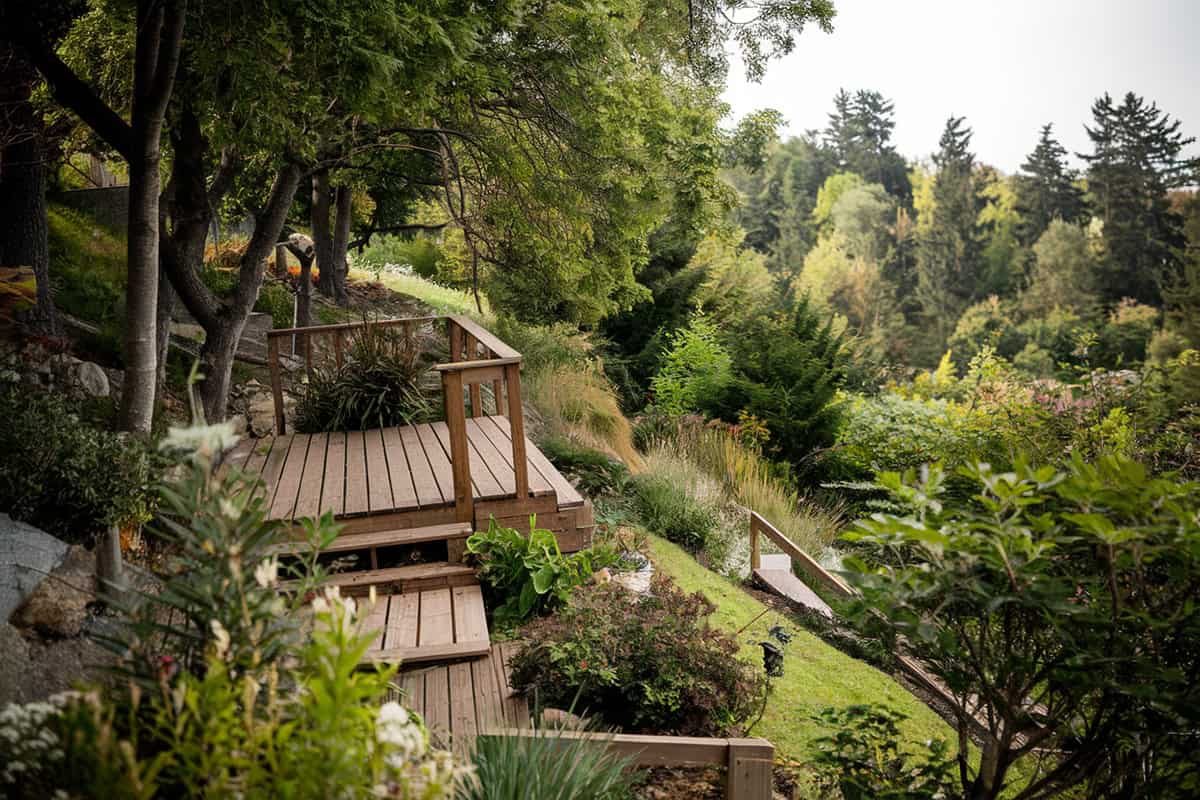
Transforming a sloped area into a woodland garden offers both aesthetic appeal and ecological benefits.
Begin by assessing the slope’s gradient and sunlight exposure. This helps you choose the right plants and design elements.
Terracing can effectively manage steep slopes. Use materials like stone or wood to create tiers. Terraces reduce erosion and provide flat planting areas. This also makes maintenance more manageable.
Choose native woodland plants for your garden. These plants are better adapted to local conditions and typically require less maintenance. Consider ferns, wildflowers, and shrubs suitable for your region.
When planting, arrange shorter plants at the top and taller plants lower down. This setup enhances visibility and access. Avoid obstructing any desirable views you wish to maintain.
Mulching is essential in a sloped garden. Organic mulch holds moisture and reduces weed growth. It also enriches the soil as it decomposes, supporting plant health.
Integrate pathways for easy access. Gravel or bark paths are practical and blend naturally with the woodland setting. Arrange these paths to ensure safe and smooth navigation.
Consider water drainage to prevent erosion. Incorporating features like rocks or a dry creek bed can aid in directing water flow down the slope.
Finally, maintenance is key. Regularly check for erosion issues or plant overcrowding. Prune or replace plants as needed to keep the garden thriving. Keep the paths clear for easy movement and aesthetic appeal.
Plants For A Sloped Woodland Garden
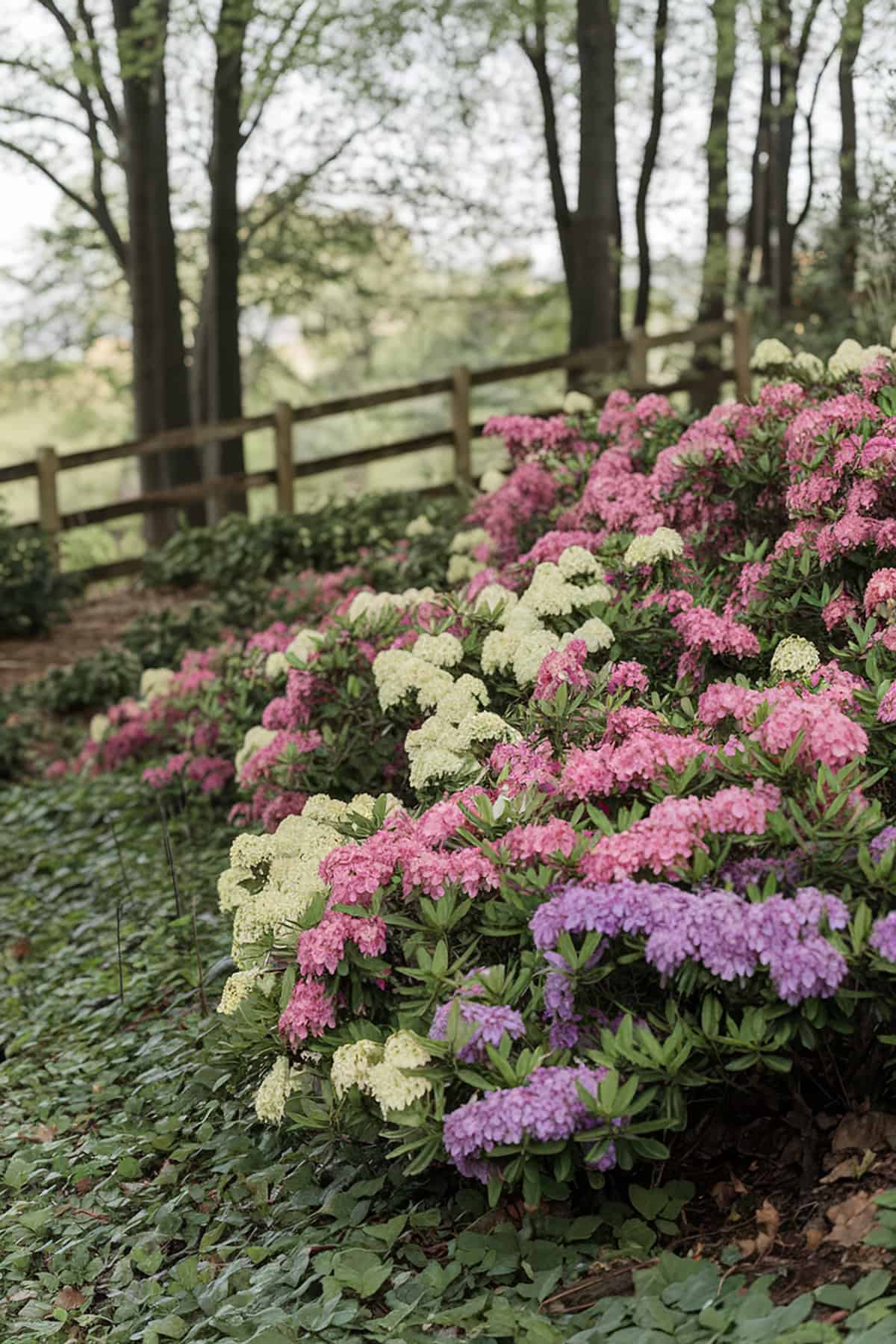
Selecting the right plants for a sloped woodland garden can enhance beauty and control erosion. Native plants thrive in these environments. They adapt well to local soils and climate.
For shady slopes, consider shade-tolerant shrubs and groundcovers. Options like ferns and low-growing vines help stabilize soil.
Use woodland wildflowers to add color. Many native wildflowers grow well on rocky, wooded slopes. In Iowa, some wildflowers are adapted to such environments.
Consider planting transplants or seeds depending on budget and area size.
Plant List for Shaded Slopes:
- Ferns: Add texture and depth.
- Shade Tolerant Shrubs: Stabilize soil with fibrous roots.
- Low Growing Vines: Carpet the ground effectively.
Choose plants based on slope specifics. Soil texture, pH, and moisture matter. Get help from local vendors familiar with your area’s conditions.
Ideas For A Sloped Woodland Garden
Creating a sloped woodland garden can be rewarding. Incorporating terraces, pathways, natural features, and varied plantings can transform sloped land into a beautiful and functional landscape.
Terraced Garden On A Slope
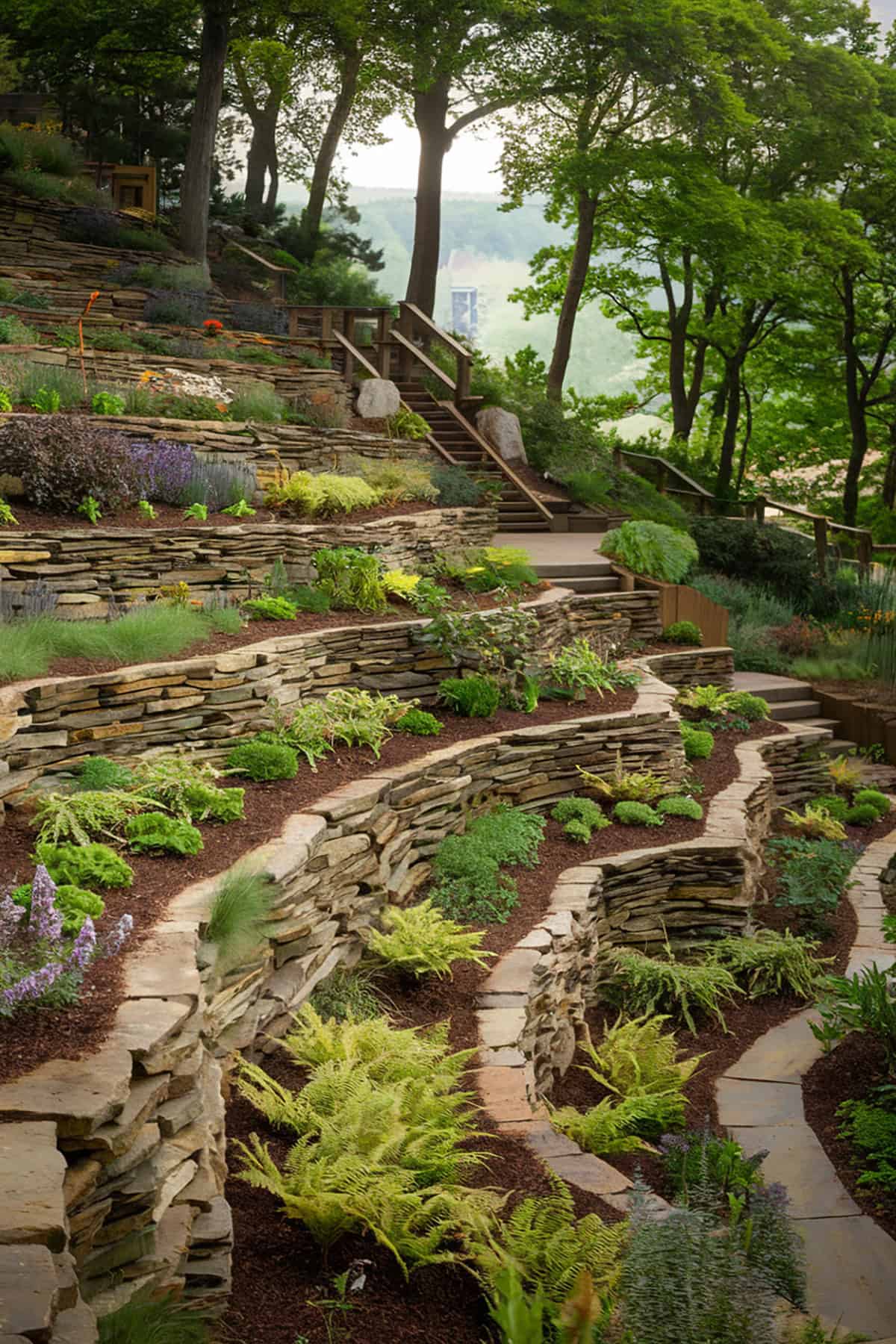
Terracing a slope can create flat areas for planting. Begin by planning the levels you want. Use stones or wooden planks to create retaining walls. These materials help hold the soil in place. Select plants suited for each terrace. Consider native ferns and shade-tolerant perennials. This will reduce maintenance and promote growth. Terraced gardens also minimize erosion. Ensure proper drainage by incorporating gravel layers. Regularly check and maintain the structures to prevent collapse.
Winding Stone Steps
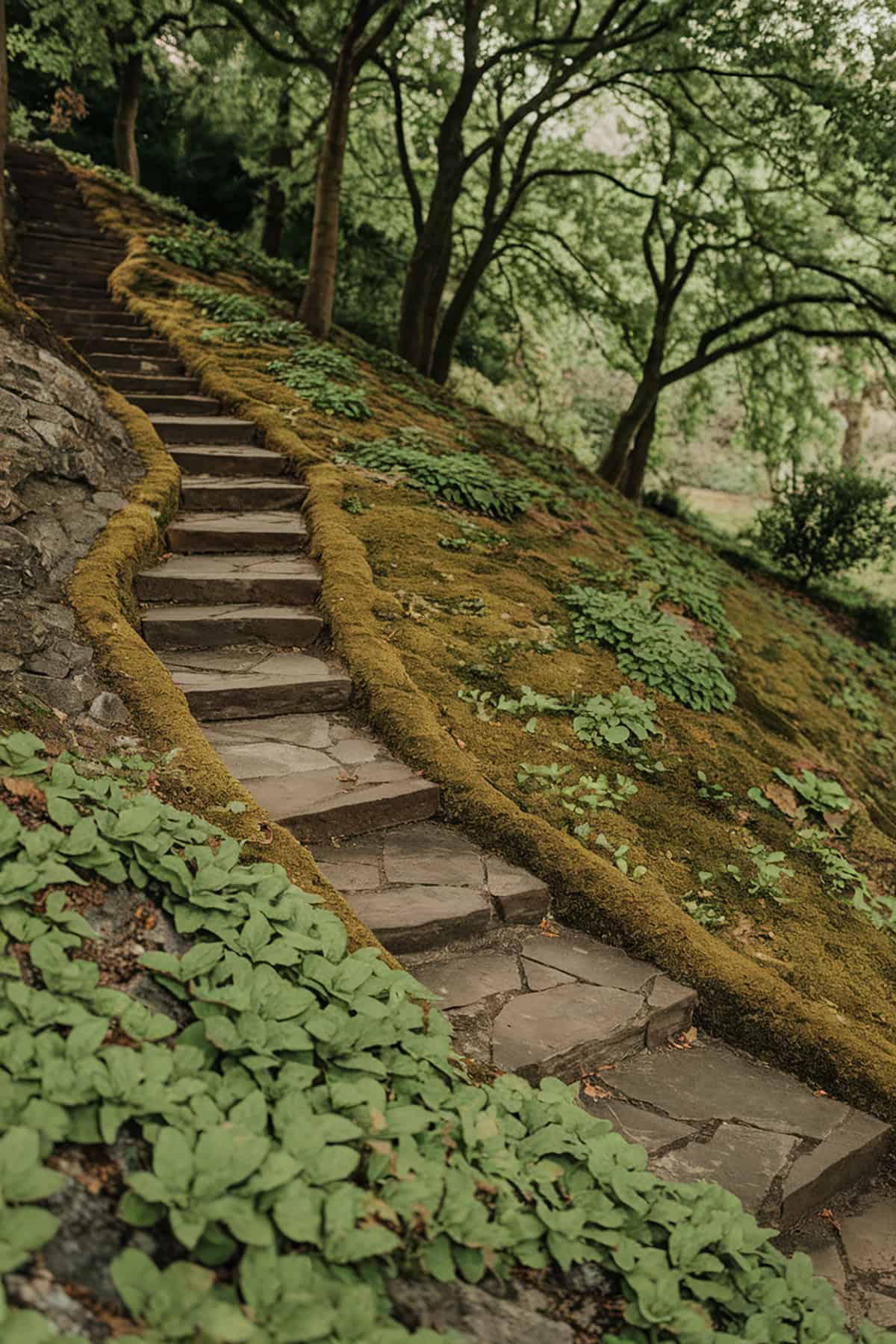
Winding stone steps can enhance both function and aesthetics. Choose durable stones like granite or slate. Begin by mapping out the path. Ensure each step is even and secure. Compact the soil before laying stones. Use gravel or sand for stabilization. Incorporate low-growing moss or grass between the stones. This softens the look and offers added grip. Lighting can be beneficial for evening use. Ensure the path curves naturally with the landscape, guiding visitors safely.
Natural Waterfall Feature
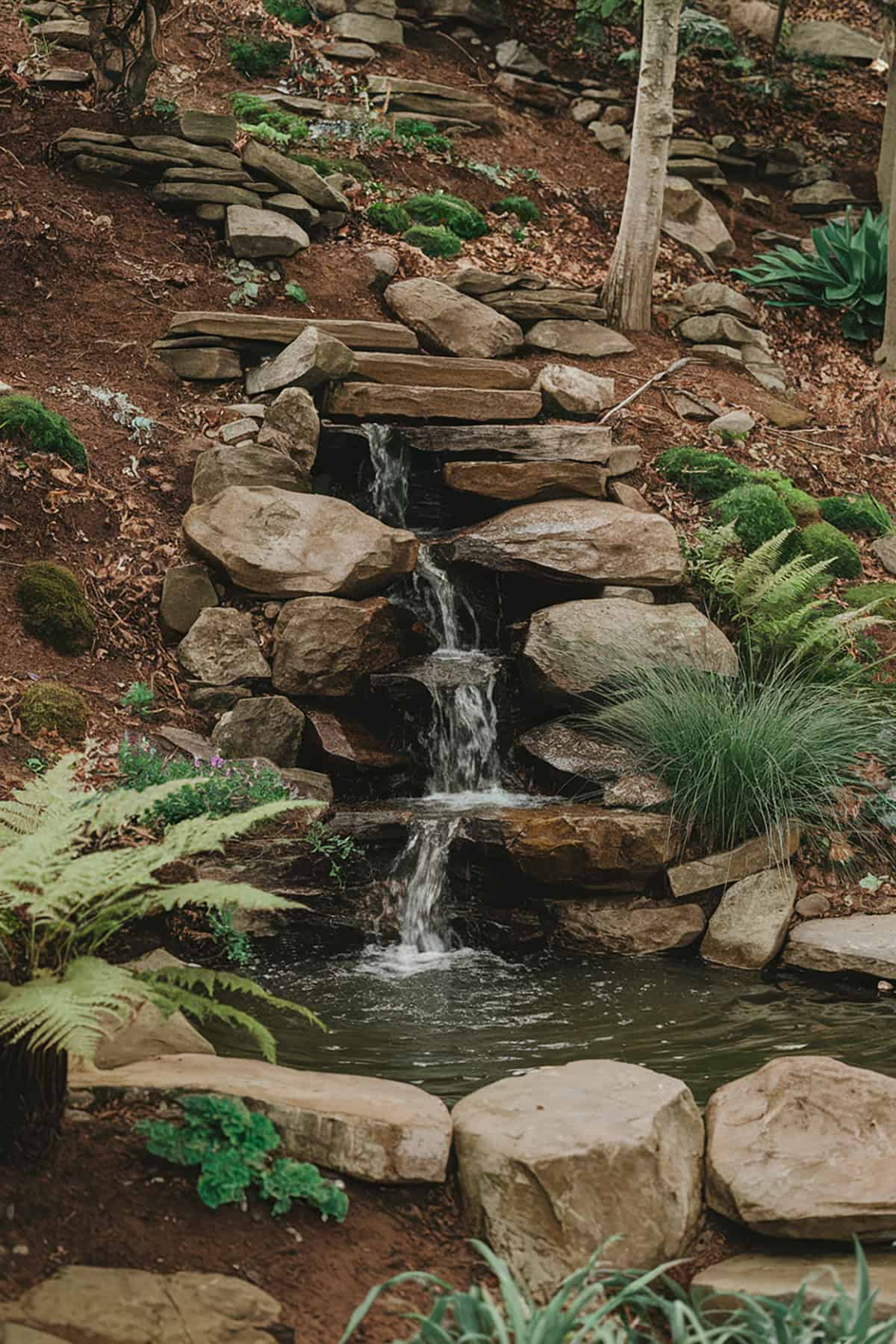
A natural waterfall feature can add tranquility. Identify a high point on the slope for water flow. Use rocks to create a cascading effect. Line the area with a pond liner to prevent leaks. Install a pump to circulate water efficiently. Surround the feature with ferns or moisture-loving plants. Monitor water levels regularly to maintain healthy plants. Adjust water flow as needed to prevent overspray. Incorporate small pebbles for a more natural look.
Log Or Timber Retaining Walls
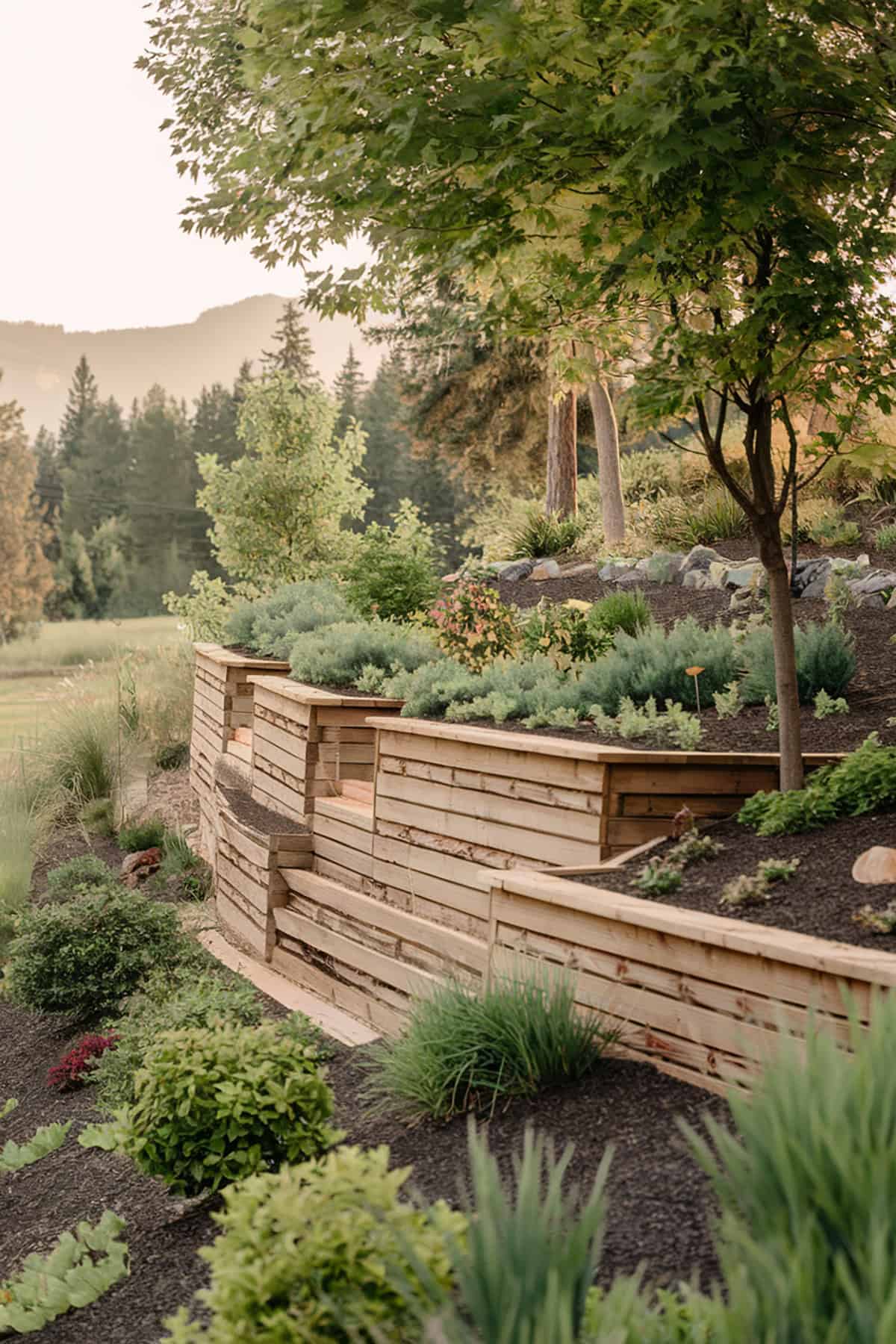
Logs or timber can offer a rustic touch. Select wood that resists rot, like cedar or redwood. Cut logs to uniform lengths for stability. Stack logs horizontally, securing them with stakes. Use gravel at the base for drainage. Incorporate small gaps to allow water flow. Avoid chemicals that may harm plants. These walls can define areas and prevent soil loss. Plant casually around the walls for a woodland feel.
Stepped Pathways With Ground Cover
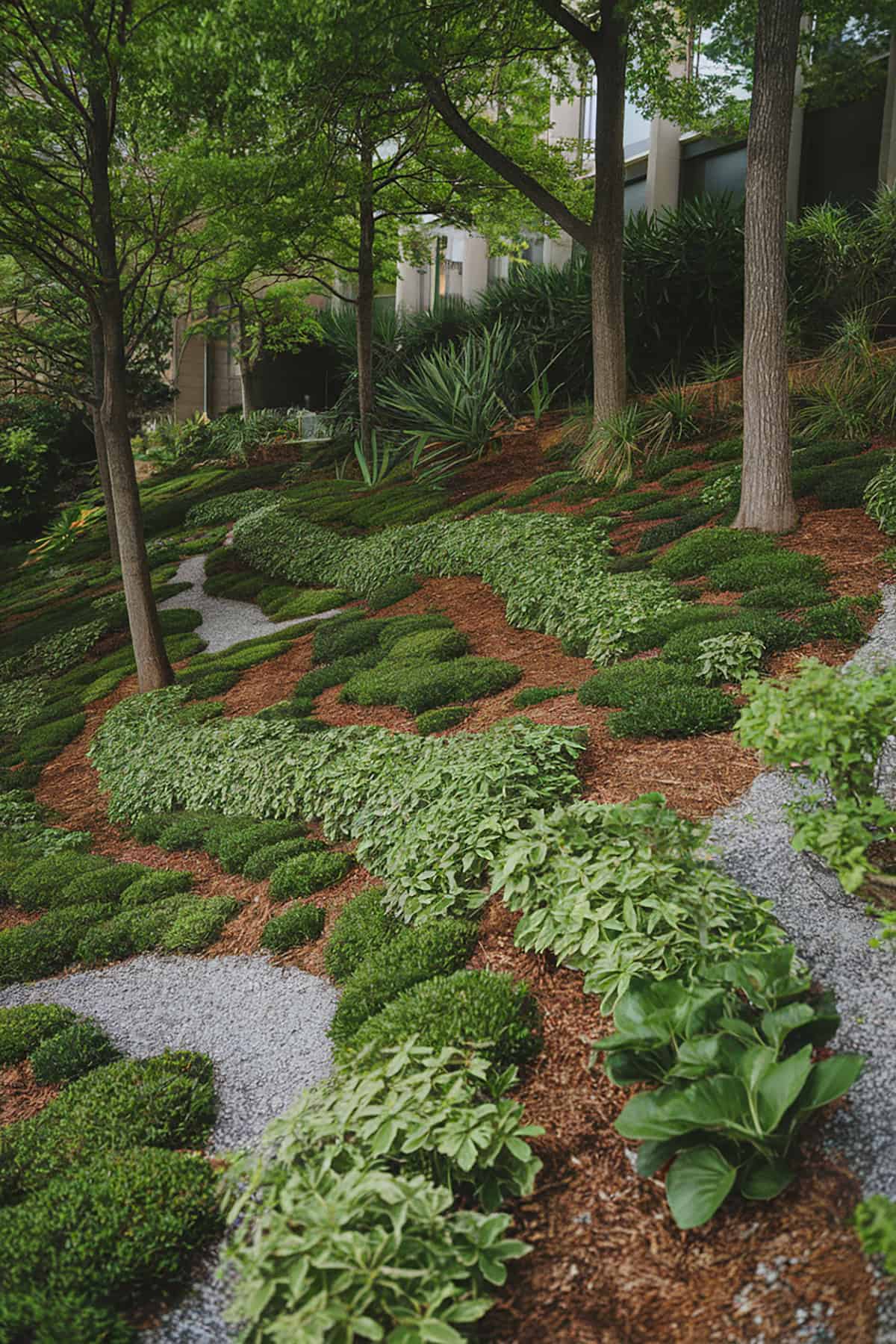
Stepped pathways with ground cover add visual interest. Create steps using materials like wood or stone. Choose ground covers such as creeping thyme or sedum. Ensure the path complements your slope’s contour. Use pea gravel for traction on each step. Spacing between steps should be consistent. Ground covers soften the hardscape, linking nature and design. They help reduce erosion by stabilizing soil at the edges. Prune regularly to prevent overgrowth.
Rock Garden On A Woodland Slope
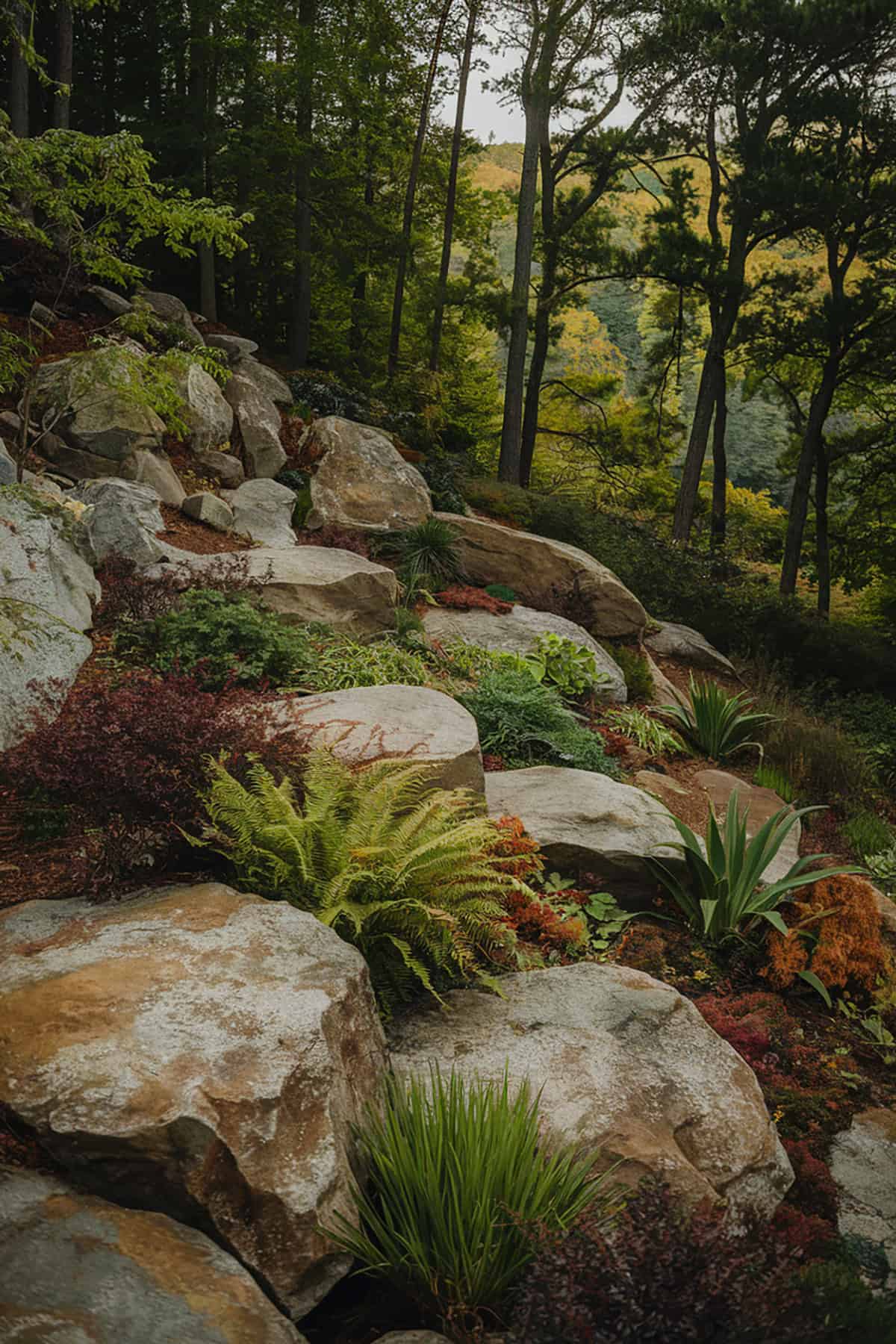
Rock gardens suit sloped woodland areas perfectly. Select a mix of large and small stones. Position rocks to mimic natural formations. Add soil and compost between stones for planting. Choose plants like succulents or dwarf evergreens. These are hardy and require little maintenance. Incorporate mulch to retain moisture. Vary plant height and color for visual appeal. Regularly remove leaves that gather around the plants. This minimizes rot and encourages growth.
Woodland Deck Overlook
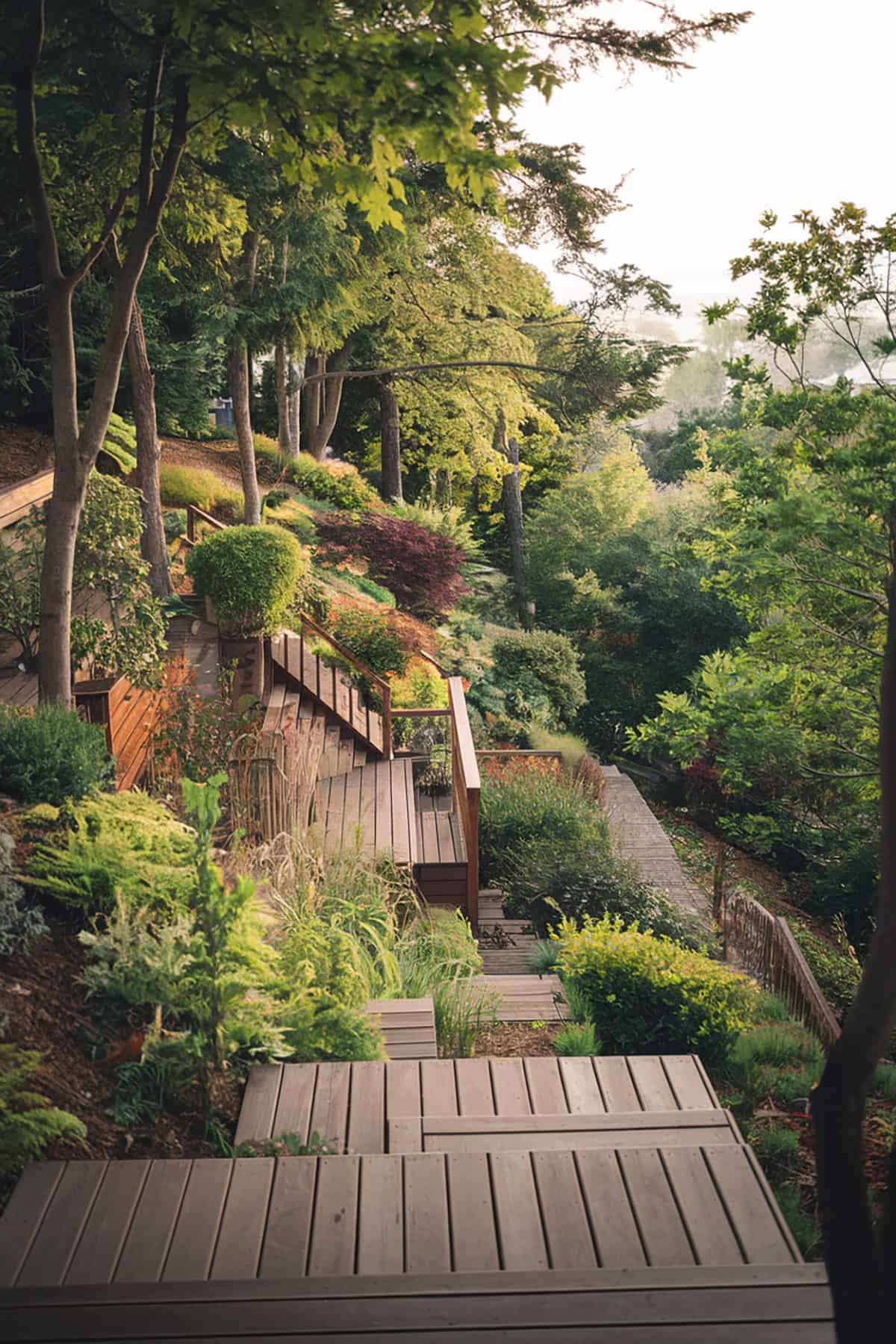
A deck can provide a space to enjoy your garden view. Ensure the deck is securely anchored. Use weather-resistant materials like treated lumber. Position the deck to capture the best views. Consider a railing for safety and aesthetics. Add seating for comfort and relaxation. Plant around the deck to integrate it with the landscape. Use native plants to enhance the connection with the woodland. Design a deck size that suits your space.
Shrubs Anchoring A Slope
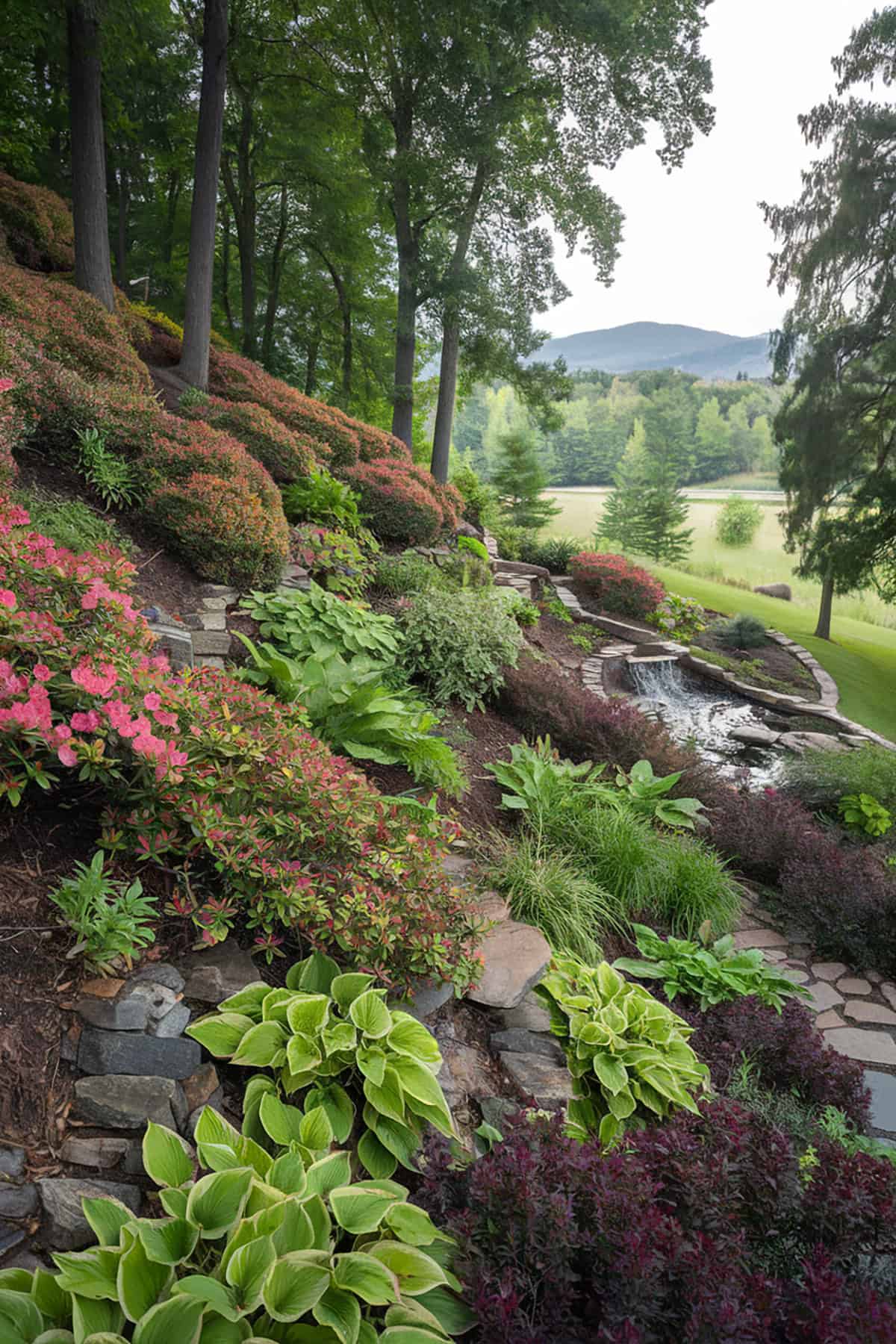
Shrubs can help anchor the slope and add structure. Choose native varieties for better adaptability. Consider species like rhododendrons or azaleas. These thrive in shady conditions. Plant in staggered rows for natural contouring. Water regularly until established. Mulch helps retain soil moisture. Prune to maintain shape and health. Use a mix of evergreen and deciduous shrubs for year-round interest. Check for pests or diseases periodically to ensure plant health.
Wildflower Meadow On A Gentle Slope
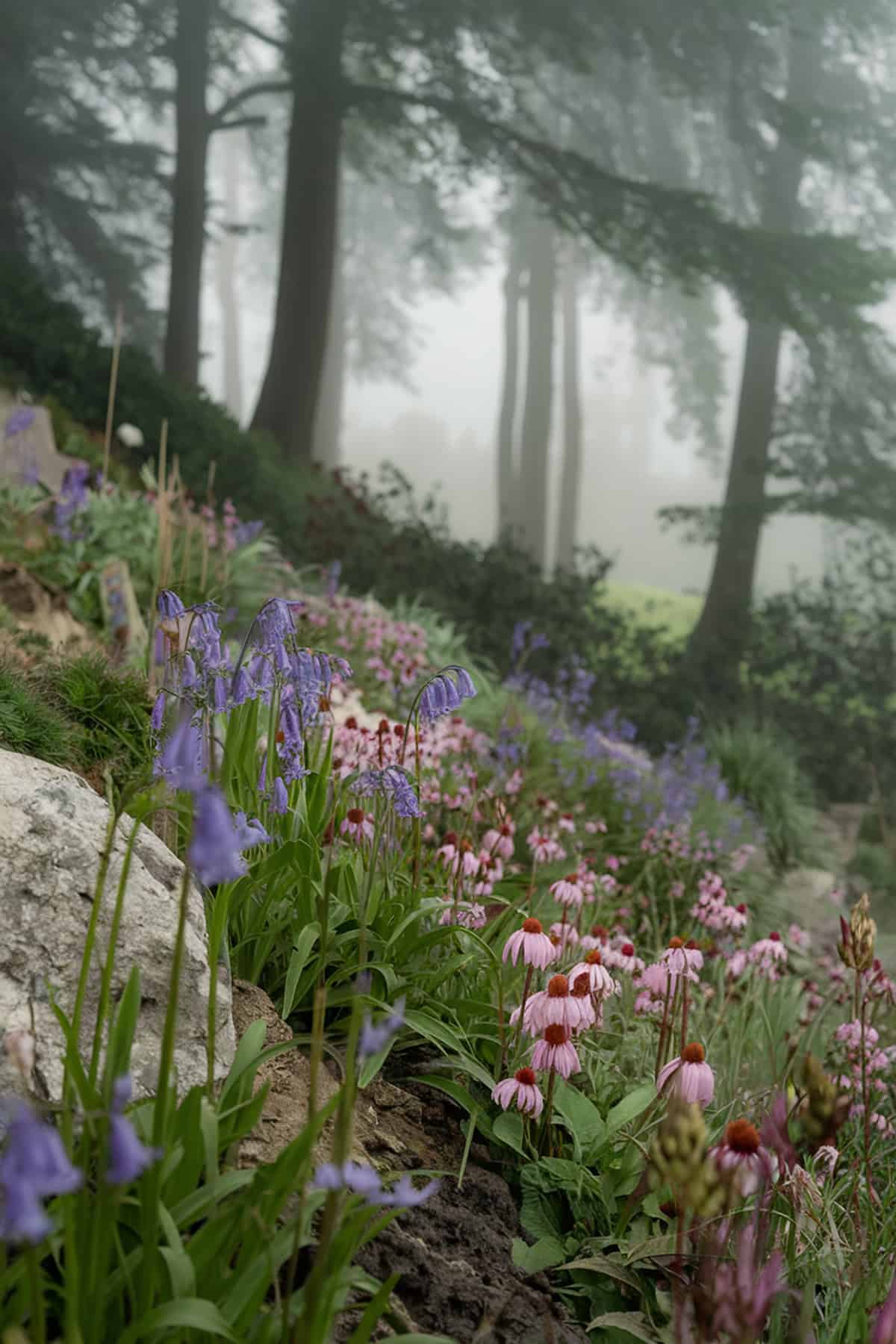
Transform a gentle slope with a wildflower meadow. Choose seeds that suit your locale’s climate. Consider a mix of perennials and annuals. Prepare the soil by removing existing weeds. Lightly rake the soil surface before seeding. Water consistently until germination occurs. This can take a few weeks. Once established, the meadow requires minimal maintenance. The flowers attract pollinators like bees and butterflies. Avoid chemical pesticides to maintain ecological balance.
Rustic Wooden Railings On Pathways
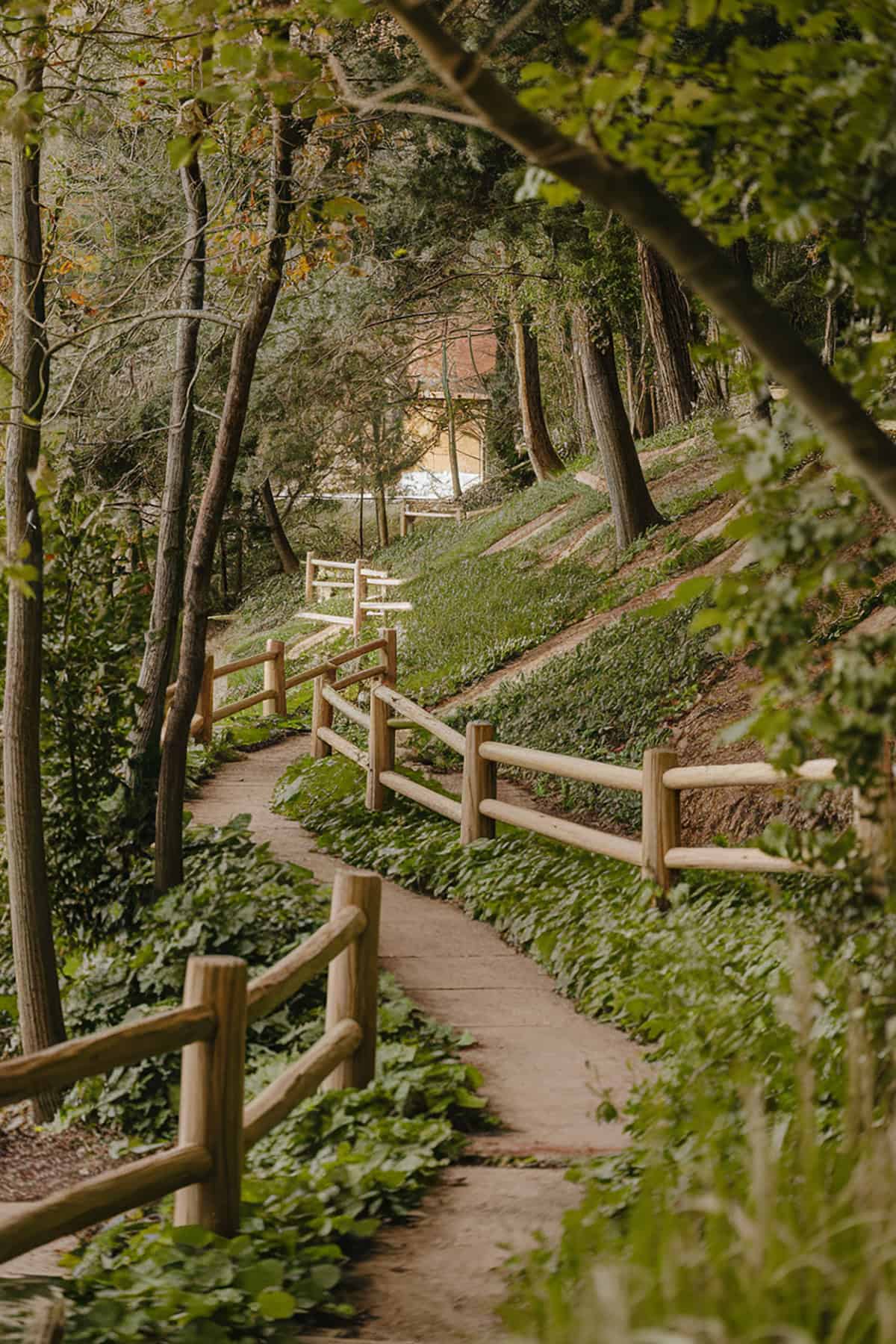
Rustic wooden railings can provide support and style. Select naturally weather-resistant wood like cedar. Position railings along steep or slippery sections. Ensure they are securely anchored. Use natural finishes to preserve the wood. Regularly inspect for wear or damage. Railings offer safety on steep paths. They add a decorative touch as well. Consider incorporating trellises or arbors for vines. Keep pathways clear of debris for safe travel.
Mossy Retaining Walls
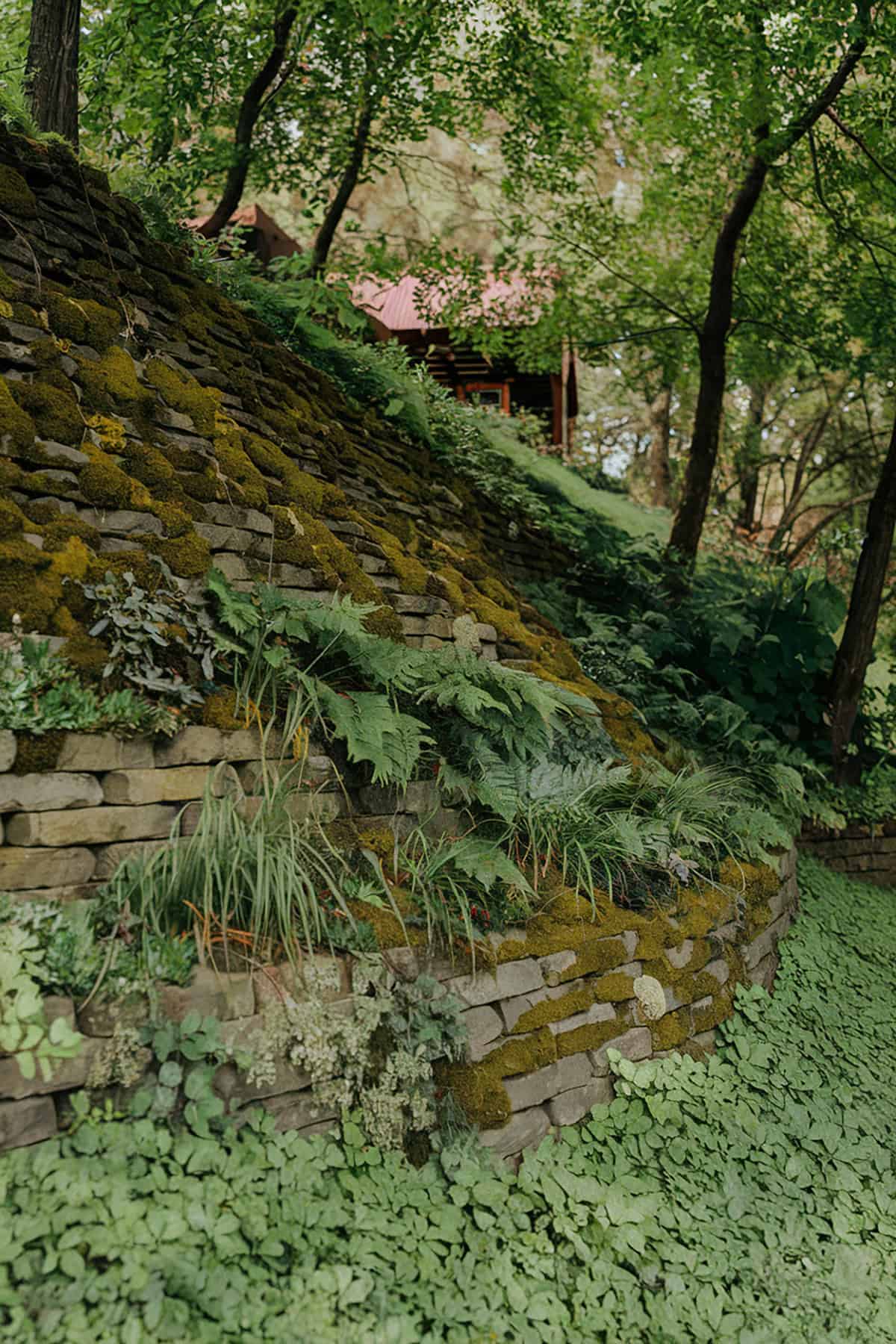
Mossy retaining walls blend seamlessly into woodland settings. Use stones or bricks that absorb moisture. Introduce moss using spores or transplanting. Maintain shade and moisture levels carefully. Use water sparingly to prevent moss drying out. Choose walls with gentle inclines for moss growth. Trim surrounding vegetation to control shade. Moss-covered walls require minimal upkeep. They add a soft, natural aesthetic to the garden.
Multi-Level Planting Layers
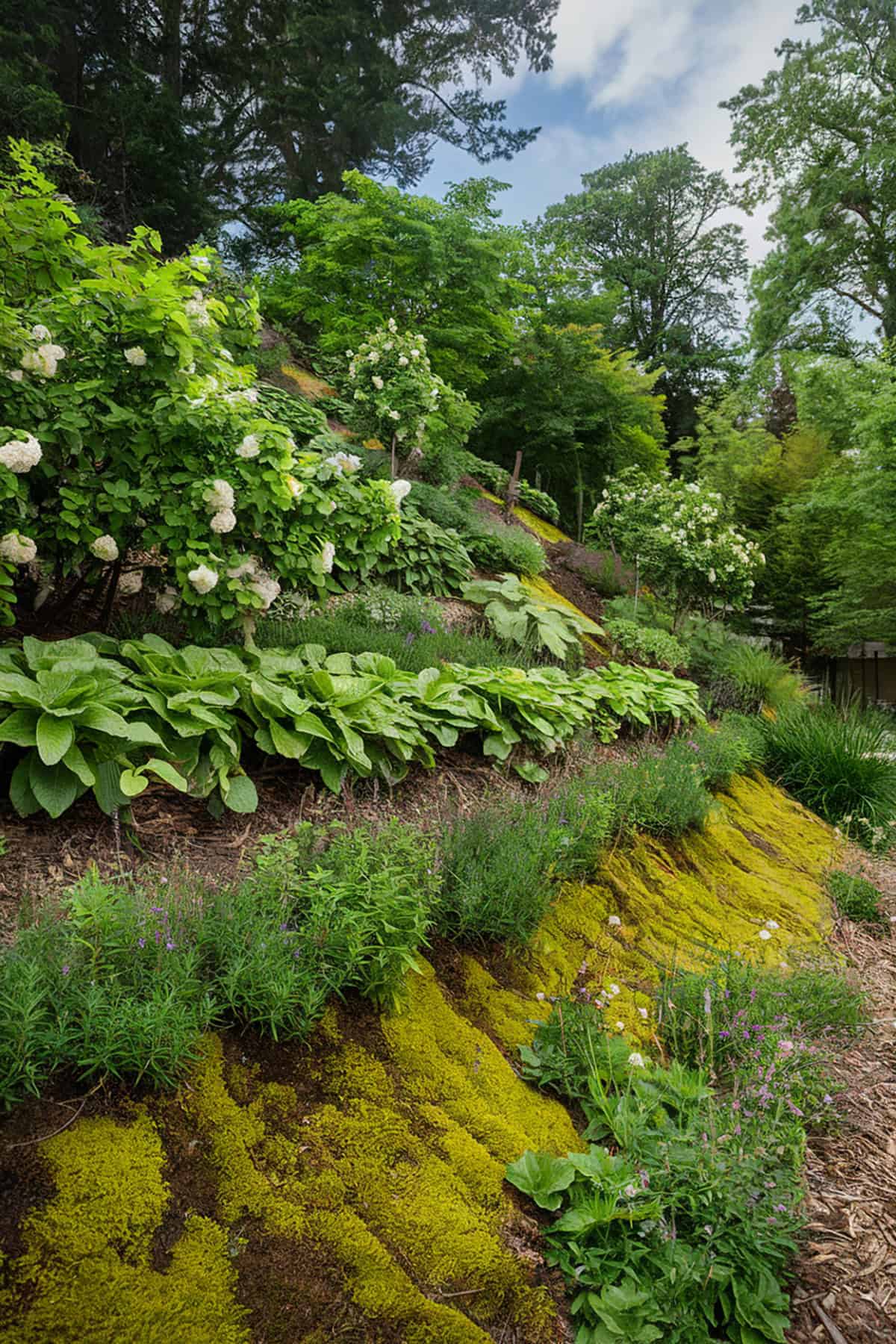
Multi-level planting layers enhance visual depth. Different levels accommodate diverse plant species. Use a combination of trees, shrubs, and ground covers. Plant taller varieties at the back or top of the slope. Medium-height plants fit in the middle layers. Use low ground covers in front. This cascading effect mimics natural woodland structures. Each layer benefits from varying sun and shade patterns. Annual maintenance keeps layers healthy.
Tree Stumps As Natural Planters
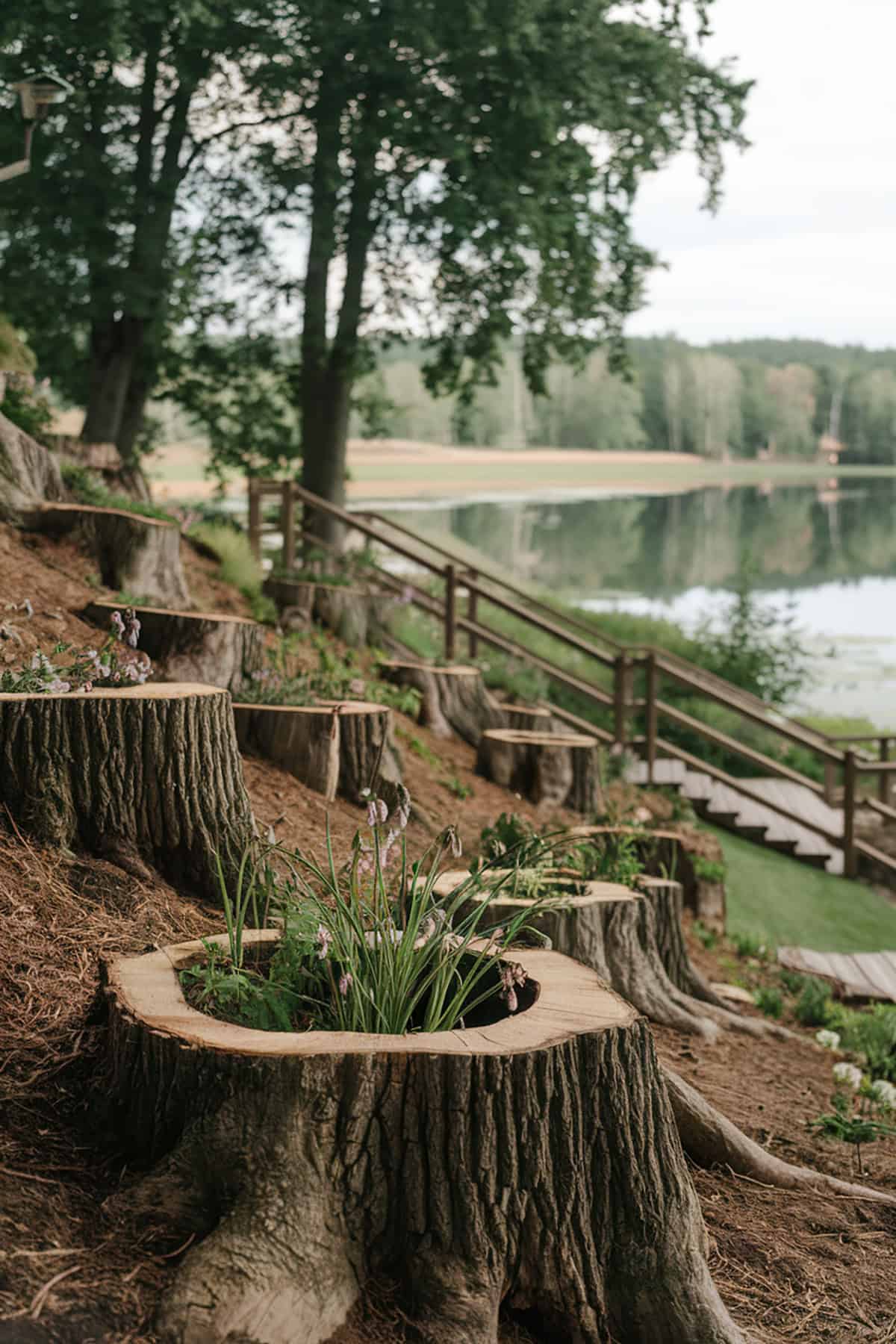
Tree stumps can become unique planters. Hollow out the stump center carefully. Fill with rich, organic soil. Choose plants that suit the light exposure. Consider ferns or woodland wildflowers. Regular watering promotes growth. Stumps provide moisture naturally. Monitor for pests like termites or beetles. Move plants indoors during harsh weather. Tree stumps add a rustic, eco-friendly element. They recycle wood effectively within the garden.
Seating Nook In The Slope
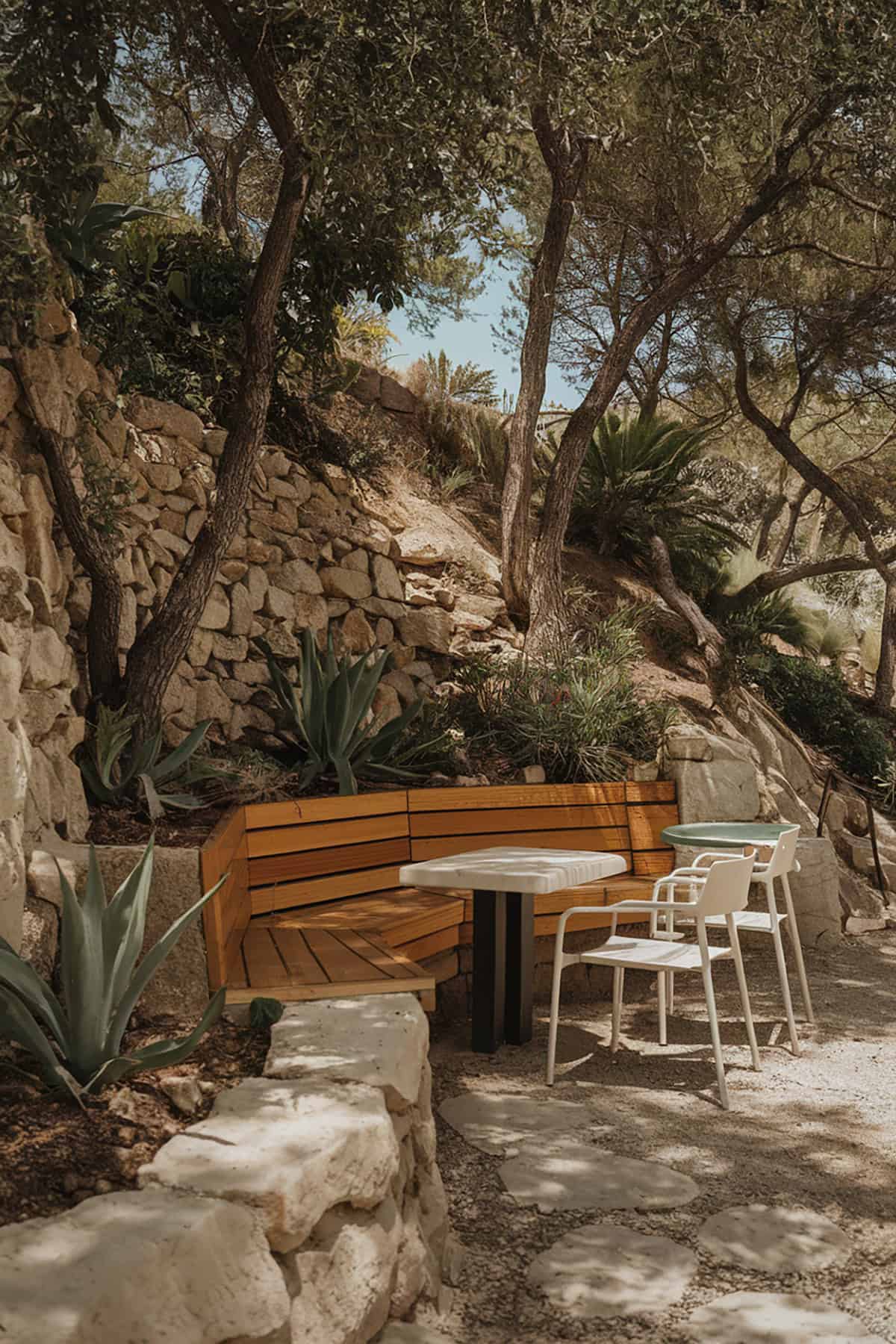
A seating nook offers a peaceful retreat. Carve a flat section from the slope carefully. Use natural stones or wood for seating. Position for optimal views and sun exposure. Surround with foliage for privacy and shade. Incorporate cushions for comfort. Add lanterns or lights for ambiance. Blend into existing pathways for accessibility. Use durable materials to withstand elements. Enjoy this intimate space year-round.
Woodland Archway On A Slope
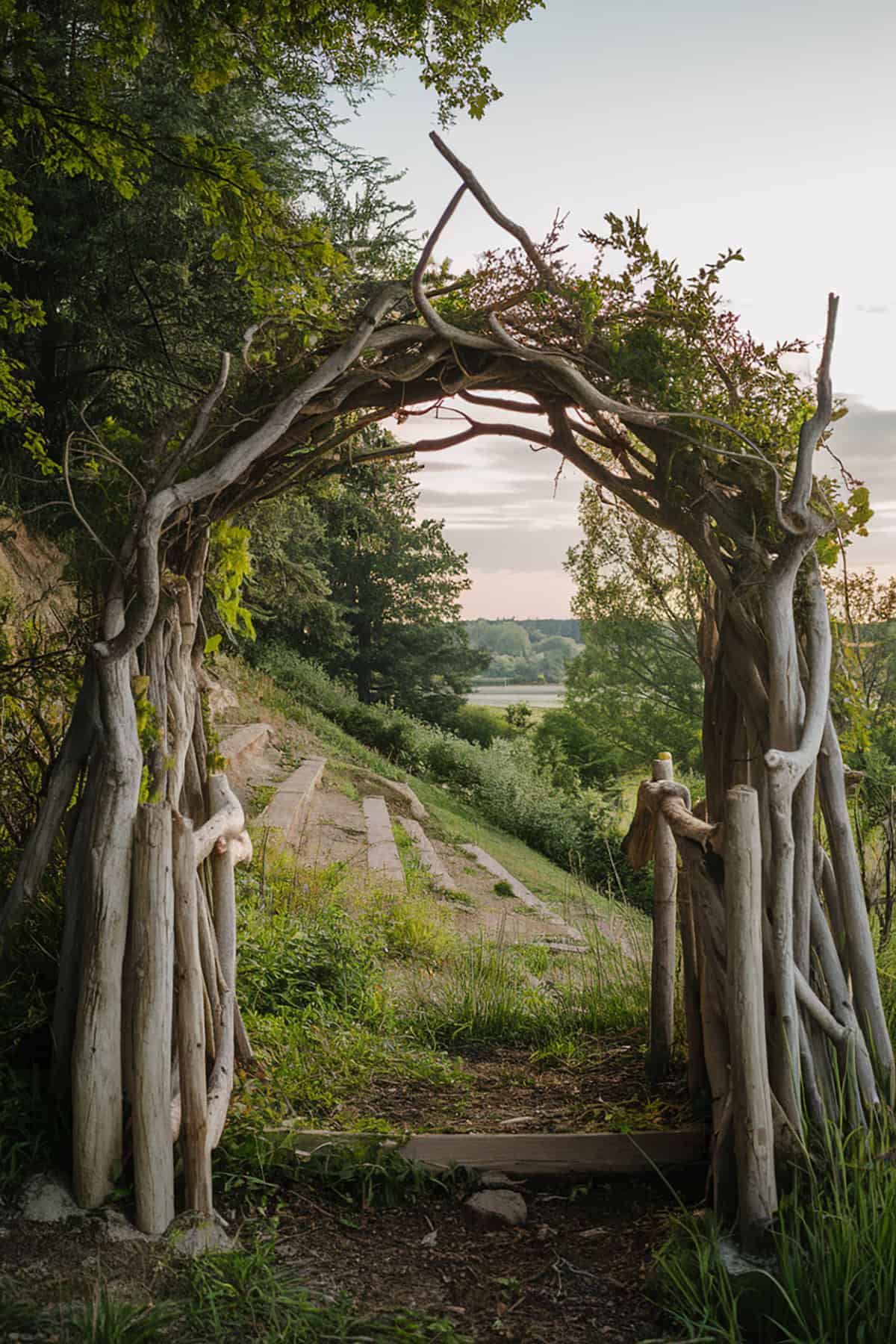
A woodland archway creates an inviting entrance. Build with materials like branches or vine structures. Position at path beginnings for dramatic effect. Cover the arch with climbing plants like honeysuckle. Ensure the arch is structurally sound. Keep plants pruned for an organized look. An archway can frame views of your garden. It adds height variation and a focal point. Replace or maintain materials as needed.
